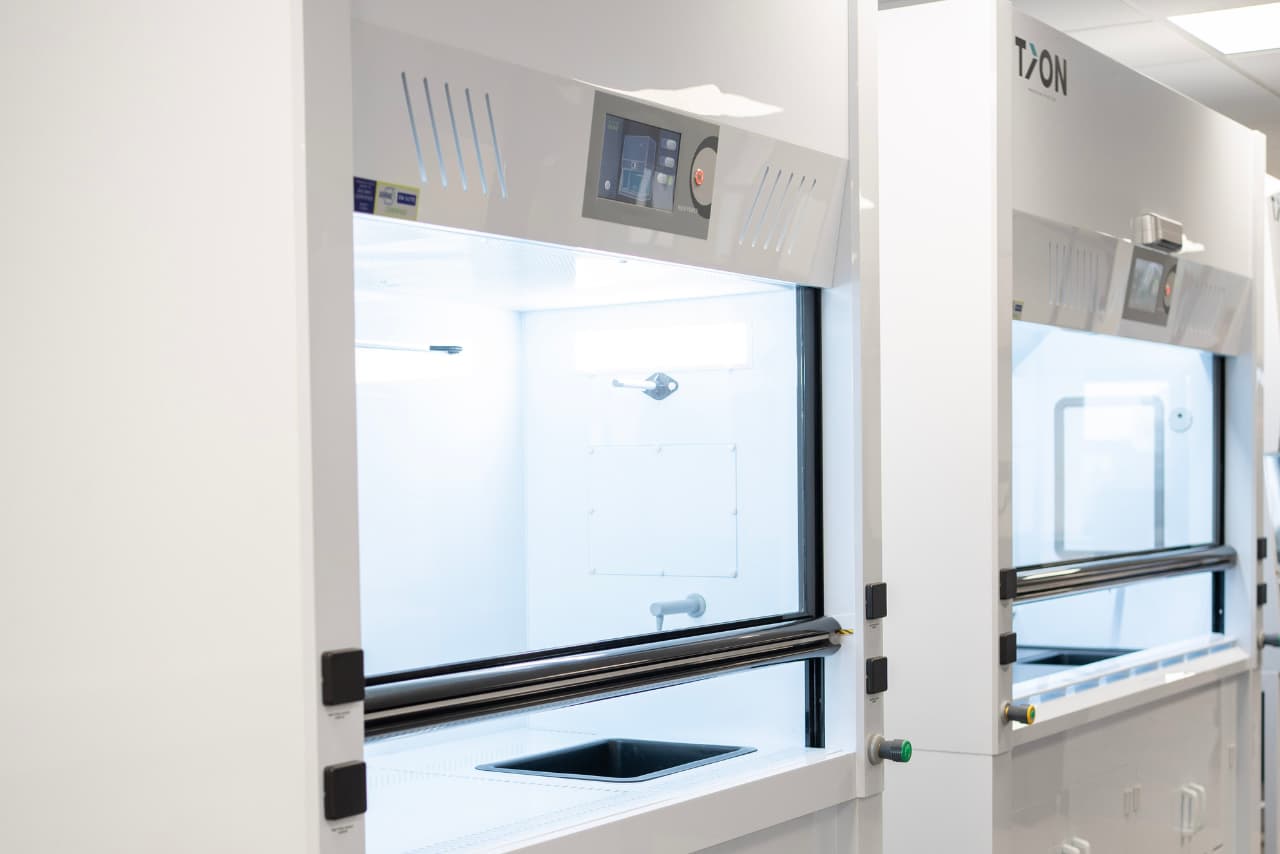
At first glance, purchasing a new fume cupboard can seem daunting. With a complex assortment of options and brands available, selecting a suitable product can leave you confused and demotivated. However, you no longer need a team of astrophysicists and rocket scientists to purchase your dream fume hood. Thanks to our talented team of solution designers, project managers and engineers, we've done the hard work for you.
Developing a specification brief that asses your laboratories processes are a recommended first step in understanding your goals. First, you need to ask yourself the following questions:
Next, we move on to the building itself. Unless your facility has been designed to accommodate a modern laboratory, you may encounter access challenges. Fume hoods weigh more than 300kg and typically measure 1200mm wide by 2300mm high. Fitting this product through a single doorway is often difficult, time-consuming and could damage the unit.
However, companies like TION Global Limited will visit you on-site and provide you with flexible options. This could be arranging an alternative access point or building a modular unit in two separate pieces.
Much like cars, the fume cupboard industry supports different brands with varying levels of functionality. This ranges from basic stand-alone fume hoods to automated units with touchscreen functionality and built-in alarms.
We understand budget constraints may restrict your fume cupboard purchasing power, but the more you spend, the more you get. For example, we manufacture our units using 100% medical-grade welded polypropylene. This extends the average life of a fume hood by ten years. Why? Because it removes any chance of corrosion, allowing you to increase the frequency and length of your experiments without damaging the body. Why spend £3,000 on a steel fume hood that needs replacing every five years? When you could spend £6,000 on a polypropylene fume hood that lasts fifteen.
Once you've selected a brand, it's time to think about the type of unit you need. Typically, there are five different options to choose from:
The type of unit you need depends on your application. If you're ever unsure, please feel to contact our team at support@tion.revuponline.co.uk.
Most fume cupboard manufacturers will install and commission the units on-site for you. Others may use third-party contractors with specialist equipment. Each method has its strengths and weaknesses, but the products need testing according to EN 14175 standards by law, annually. At TION, we offer 36-month service contracts to manage this process for you. Ensuring your fume cupboards are safe, secure, and compliant.
However, if you're installing the units in-house, our engineers have listed some key considerations:
Our Expert Opinion: Purchasing a fume cupboard is a time-consuming process. It requires due diligence, understanding and patience. But thanks to companies like TION Global Limited, you have professional resources available to simplify your decisions. Our solution designers are here to help from concept to completion.
Read our Privacy Policy for more information on how we collect and process data.



No thank you
Read our Privacy Policy for more information on how we collect and process data.